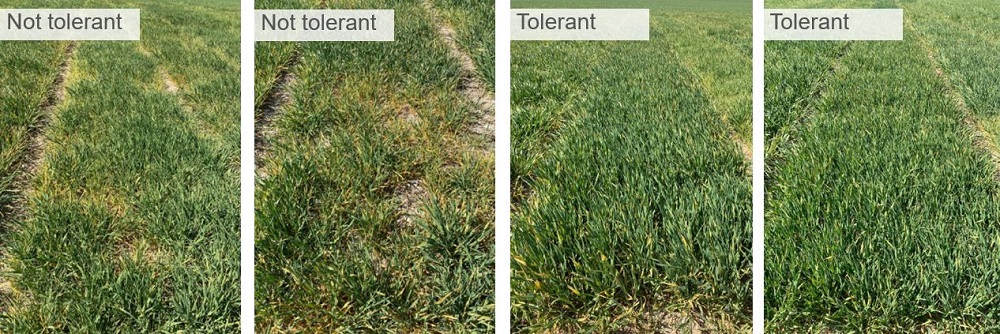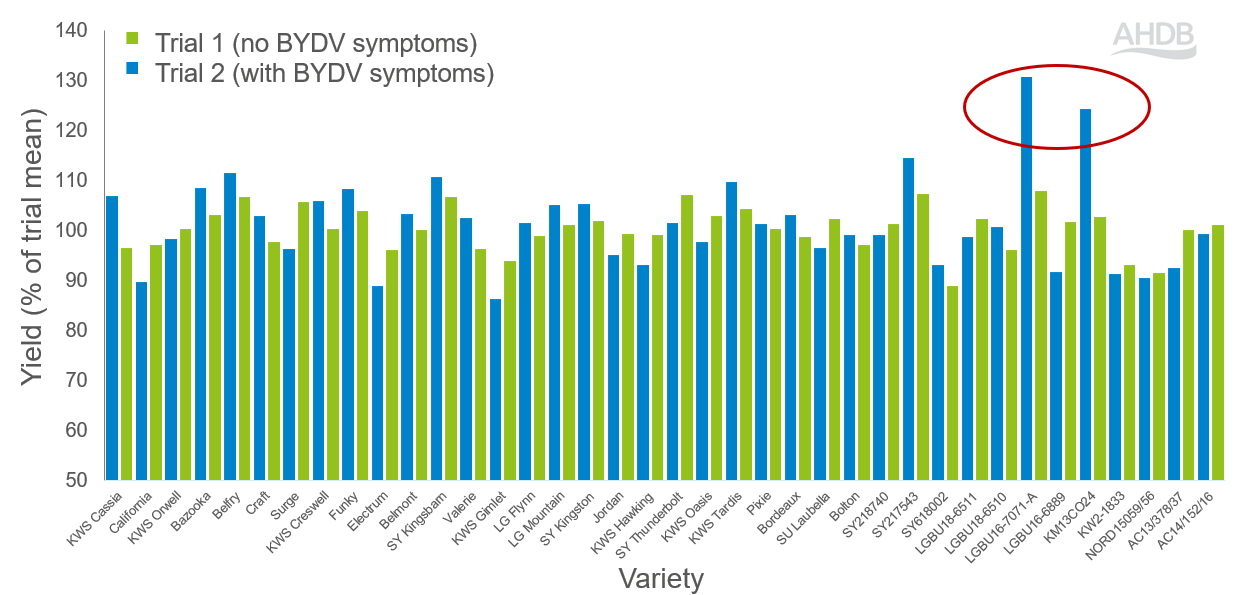What is the value of BYDV resistance/tolerance in cereals?
Monday, 10 January 2022
The Recommended Lists (RL) now features wheat and barley varieties that claim to withstand Barley yellow dwarf virus (BYDV). Do such claims translate to measurable differences in cereal yields or is it just a gimmick? Paul Gosling, who leads the RL at AHDB, investigates.
The RL 2022/23 is now online, featuring several new variety types and traits. The use of specialist categories and described types allows us to provide specific recommendations for varieties that have novel traits. We expect to use this route more the future, because it helps the RL provide choices for farmers who face specific agronomic challenges or want to tap into new niche markets.
Specialist traits: BYDV example
Resistance/tolerance to Barley yellow dwarf virus (BYDV) in cereals is a specialist trait we added to the RL, recently.
The previous edition of the RL (2021/22) included the winter wheat variety RGT Wolverine for the first time, and it was the first variety listed that featured a trait to resist BYDV.
In the latest edition of the RL (2022/23), the winter barley variety KWS Feeris, with BYDV tolerance, was added.
Control of BYDV through genetics is becoming more appealing, following the loss of seed treatment options for autumn aphid control. The use of such specialist options is particularly valued by those concerned about resistance in aphids to pyrethroid sprays, especially in high-risk BYDV situations.
BYDV in trials: the Dorset experience
Some traits are difficult to test for, so we ask breeders to provide evidence to support their claims. It is important to state that we do not verify their claims in RL trials. BYDV resistance/tolerance is one such trait. While RL trial operators do record BYDV symptoms in trials, it is difficult to set up a fair test of resistance/tolerance due to the sporadic nature of the disease – across trials, plots and even within plots.
Sometimes, however, trials deliver their own unplanned verdict on crop genetics. This was illustrated perfectly by two winter barley RL trials in 2021. Located in Dorset, the trials took place just 1.5 km away from each other and were drilled just 10 days apart. The same variety set was grown at each trial site, including two varieties with BYDV tolerance.
Trial 1
- Drilled: 15 September 2020
- Pyrethroid application: 11 November (lambda-cyhalothrin)
- BYDV symptoms: None
Trial 2
- Drilled 25 September 2020
- Pyrethroid application: None
- BYDV symptoms: Developed in the spring
In trial 2, the one with BYDV symptoms, plot photos (26 April 2021) clearly showed that the two BYDV tolerant varieties were performing far better than varieties with no tolerance, in terms of visual symptoms.
 AHDB
AHDB
BYDV yield impacts
Of course, tolerance only counts when it makes a difference to yield. When we looked at how varieties yielded, compared to the trial mean (set at 100%), the two BYDV-tolerant varieties clearly outperformed the other varieties in trial 2, where BYDV symptoms were present (see red circle in the graph, below).
 AHDB
AHDB
- In the trial with no BYDV symptoms, the two BYDV-tolerant varieties scored 108% and 103% of the trial mean
- In the trial with BYDV symptoms, the two BYDV-tolerant varieties scored 131% and 124% of the trial mean
In the BYDV-infected trial, BYDV tolerance translated into a 23% and 21% yield increase, in the two varieties, respectively.
In conclusion, in situations where BYDV infection is a serious threat, BYDV tolerance is a useful trait, with measurable yield benefits.
This article is based on a presentation delivered by Paul Gosling at the AHDB Agronomists’ Conference 2021.
Watch the presentation on YouTube
Jump to the BYDV segment of the presentation.
Topics:
Sectors:
Tags:



